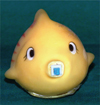1. Shilpapriya M, Jayanthi M, Reddy VN, Sakthivel R, Selvaraju G, Vijayakumar P. Effectiveness of new vibration delivery system on pain associated with injection of local anaesthesia in children. J Indian Soc Pedod Prev Dent. 2015; 33:173–176.

2. Abdelmoniem SA, Mahmoud SA. Comparative evaluation of passive, active, and passive-active distraction techniques on pain perception during local anaesthesia administration in children. J Adv Res. 2016; 7:551–556.

3. Chaudhry K, Shishodia M, Singh C, Tuli A. Comparative evaluation of pain perception by vibrating needle (Vibraject™) and conventional syringe anaesthesia during various dental procedures in pediatric patients: a short study. Int Dent Med J Adv Res. 2015; 1:1–5.

4. Colaric KB, Overton DT, Moore K. Pain reduction in lidocaine administration through buffering and warming. Am J Emerg Med. 1998; 16:353–356.

5. Mohiuddin I, Setty JV, Srinivasan I, Desai JA. Topical application of local anaesthetic gel vs ice in pediatric patients for infiltration anaesthesia. J Evol Med Dent Sci. 2015; 4:12934–12940.

6. Ungor C, Tosun E, Dayisoylu EH, Taskesen F, Senel FC. The effects of vibration on pain and anxiety during local anaesthesia administration. JSM Dent. 2014; 2:1022.
7. Usichenko TI, Wolters P, Anders EF, Splieth C. Acupuncture reduces pain and autonomic distress during injection of local anesthetic in children. Clin J Pain. 2016; 32:82–86.

8. Navit S, Johri N, Khan SA, Singh RK, Chadha D, Navit P, et al. Effectiveness and comparison of various audio distraction aids in management of anxious dental paediatric patients. J Clin Diagn Res. 2015; 9:ZC05–ZC09.

9. Nuvvula S, Alahari S, Kamatham R, Challa RR. Effect of audiovisual distraction with 3D video glasses on dental anxiety of children experiencing administration of local analgesia: a randomised clinical trial. Eur Arch Paediatr Dent. 2015; 16:43–50.

10. Aminabadi NA, Farahani RM, Balayi Gajan E. The efficacy of distraction and counterstimulation in the reduction of pain reaction to intraoral injection by pediatric patients. J Contemp Dent Pract. 2008; 9:33–40.

11. Ramírez-Carrasco A, Butrón-Téllez Girón C, Sanchez-Armass O, Pierdant-Pérez M. Effectiveness of Hypnosis in Combination with Conventional Techniques of Behaviour Management in Anxiety/Pain Reduction during Dental Anesthetic Infiltration. Pain Res Manag. 2017; 2017:1434015.
12. O'Brien L, Taddio A, Lyszkiewicz DA, Koren G. A critical review of the topical local anesthetic amethocaine (Ametop) for pediatric pain. Paediatr Drugs. 2005; 7:41–54.
13. Dubey A, Singh BD, Pagaria S, Avinash A. The Wand: A Mini Review of an Advanced Technique for Local Anaesthesia Delivery in Dentistry. Am J Adv Drug Deliv. 2014; 30:1–6.
14. Aminah M, Nagar P, Singh P, Bharti M. Comparison of topical anesthetic gel, pre-cooling, vibration and buffered local anaesthesia on the pain perception of pediatric patients during the administration of local anaesthesia in routine dental procedures. J Int Med Res. 2017; 4:400–403.
15. Singh H, Rehman R, Kadtane S, Dalai DR, Jain CD. Techniques for the behaviours management in pediatric dentistry. Int J Sci Study. 2014; 2:269–272.
16. Majstorovic M, Veerkamp JS. Developmental changes in dental anxiety in a normative population of Dutch children. Eur J Paediatr Dent. 2005; 6:30–34.
17. Mathewson RJ, Primosch RE. Fundamentals of Pediatric Dentistry. 3rd ed. Quintessence Publishing Co.;1995. p. 17.
18. Merkel SI, Voepel-Lewis T, Shayevitz JR, Malviya S. The FLACC: a behavioural scale for scoring postoperative pain in young children. Pediatr Nurs. 1997; 23:293–297.
19. Wong DL, Baker CM. Pain in children: comparison of assessment scales. Pediatr Nurs. 1988; 14:9–17.
20. Deepak V, Challa RR, Kamatham R, Nuvvula S. Comparison of a new auto-controlled injection system with traditional syringe for mandibular infiltrations in children: A randomized clinical trial. Anesth Essays Res. 2017; 11:431–438.

21. Melwani AM, Srinivasan I, Setty JV, Pamnani SS, Lalitya D. A clinical comparative study between conventional and camouflaged syringes to evaluate behaviour and anxiety in 6–11-year-old children during local anaesthesia administration—a novel approach. J Dent Anesth Pain Med. 2018; 18:35–40.

22. Peretz B, Efrat J. Dental anxiety among young adolescent patients in Israel. Int J Paediatr Dent. 2000; 10:126–132.

23. Allani S, Setty JV. Effectiveness of distraction techniques in the management of anxious children in the dental operatory. IOSR J Dent Med Sci. 2016; 15:69–73.

24. González-Castro O, Arias A. Controlled flow of dental anesthesia solution to reduce pain and anxiety. Int J Clin Anesthesiol. 2017; 5:1075.






 PDF
PDF ePub
ePub Citation
Citation Print
Print







 XML Download
XML Download